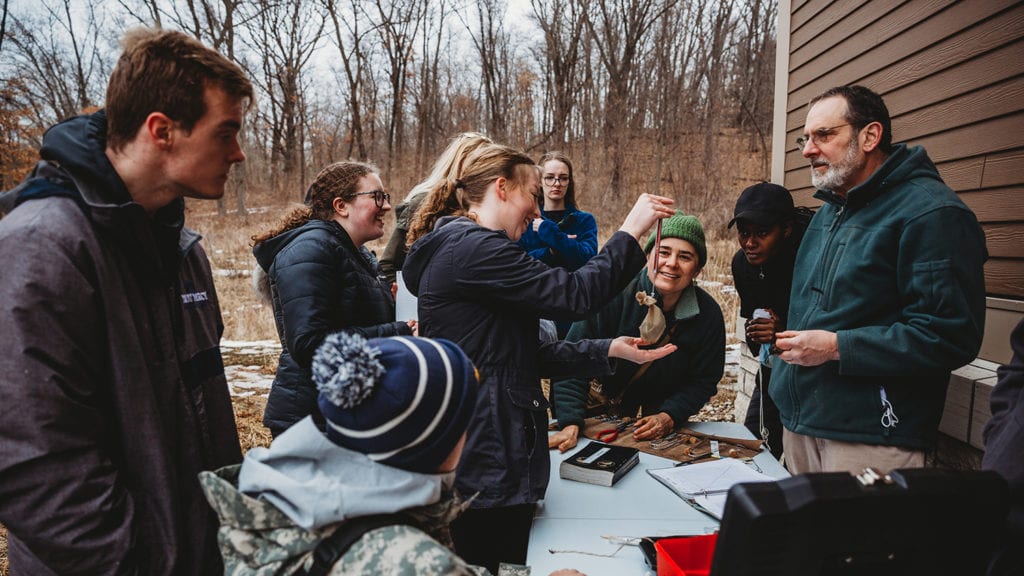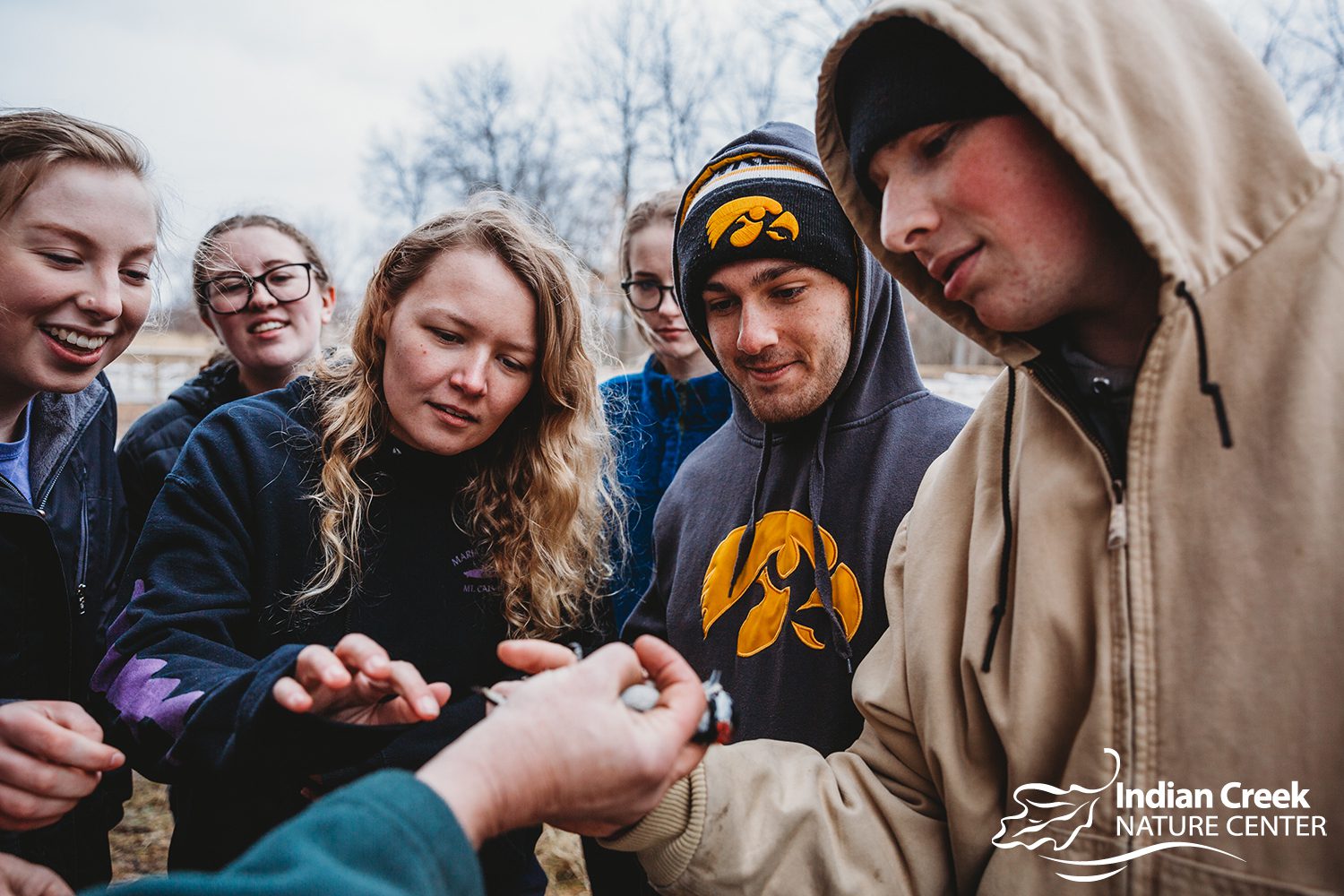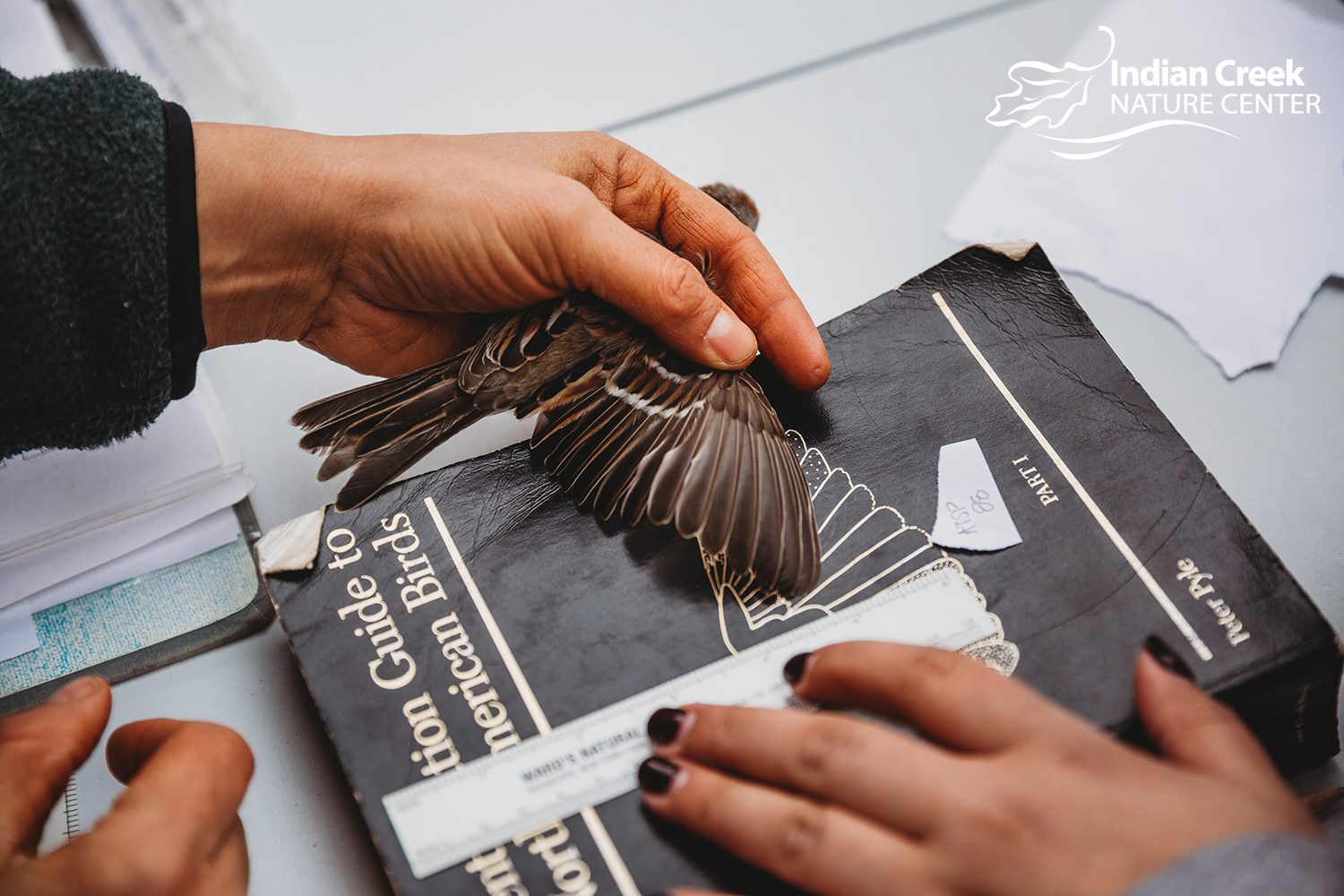Our recent bird banding programs were cancelled due to COVID-19, but, we wanted to share a little bit about the practice to help people better understand what exactly it is and why we do it.
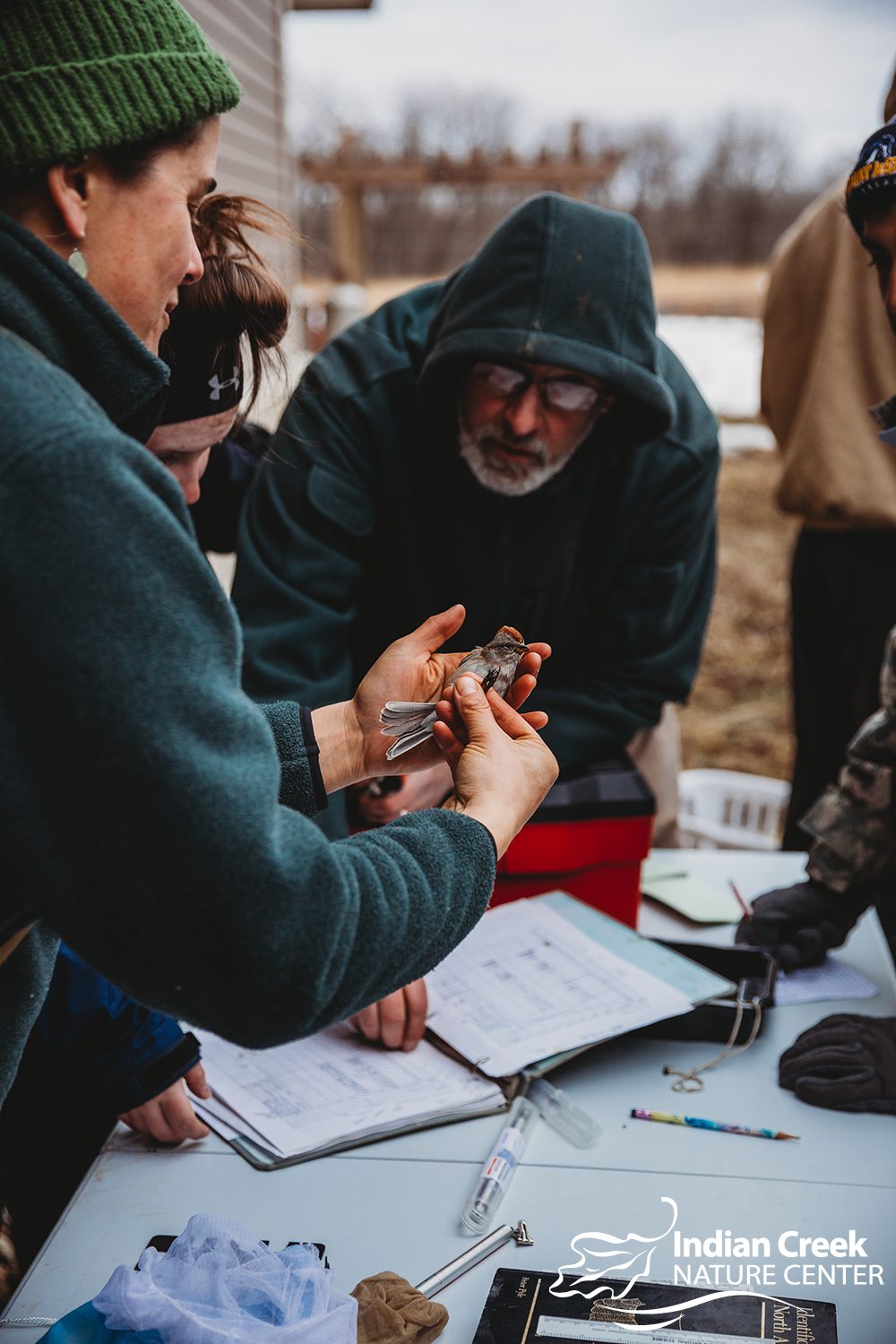
We talked to local Ornithologist Neil Bernstein to get you all the answers. Neil has been birdwatching since the late 60s and has a Ph.D. in ecology and behavior. Here’s our Q&A.
Why do ornithologists band birds? What purpose does this serve the scientific community?
From a scientific standpoint, bird banding allows us to follow individual birds. Most of the banded birds receive US Fish and Wildlife bands with unique numbers, usually stamped on soft aluminum bands that vary in size to fit various kinds of birds. We catch the birds in a variety of ways, but the most common method for songbirds is a fine mesh net called a mist net. By noting when we catch the birds, we can learn about migratory patterns. We also try to age and sex the bird and determine how the birds’ feathers are changing (molting) so that we learn about the yearly cycle of birds.

One of the interesting aspects of ornithology and banding occurs in areas where long-term monitoring is happening. These are areas where birds congregate during migration. Ornithologists have maintained banding operations in these areas for decades and are able to determine population trends and migration time changes. Researchers can now take feather samples from a migrant and sometimes determine where in the world it wintered by the molecules sequestered in the feathers that were gained from the bird’s diet.
For an interesting story about long-term research on birds, you can look to https://www.allaboutbirds.org/news/how-juncos-changed-their-migration-behavior-and-plumage-in-a-matter-of-decades/
Why is bird banding in the Cedar Rapids area important?
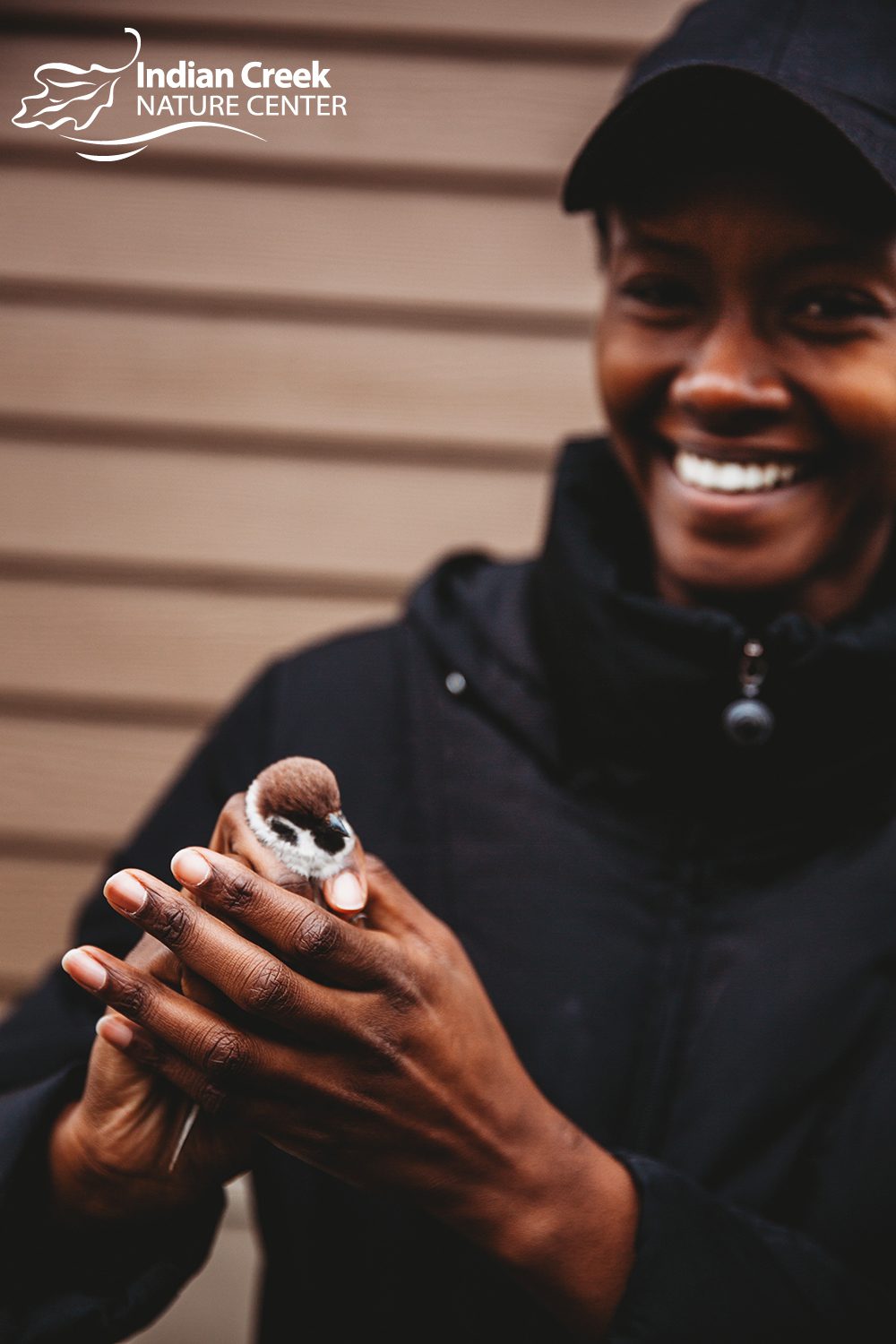 We have several active bird banders in the area whose data have contributed greatly to research and education. For example, Rob Bradley and his crew band thousands of birds across eastern Iowa each year. His data have contributed greatly to the point that I make above, but he also has an impressive list of recaptures. In some cases, we get lucky and catch something unusual. In some cases, we get lucky and catch something unusual. Last fall, Rob, myself, another ornithologist, Anya Illes, and one of my classes were banding at the Indian Creek Nature Center when we caught a late migrating Tennessee Warbler. I don’t think we would have expected that bird so late in the year.
We have several active bird banders in the area whose data have contributed greatly to research and education. For example, Rob Bradley and his crew band thousands of birds across eastern Iowa each year. His data have contributed greatly to the point that I make above, but he also has an impressive list of recaptures. In some cases, we get lucky and catch something unusual. In some cases, we get lucky and catch something unusual. Last fall, Rob, myself, another ornithologist, Anya Illes, and one of my classes were banding at the Indian Creek Nature Center when we caught a late migrating Tennessee Warbler. I don’t think we would have expected that bird so late in the year.
Describe bird banding in the spring as a recreational opportunity, as well as a learning opportunity.
When I band at ICNC, I love to see families and children. Not only are they enjoying the outdoors, but also getting a chance to look closely at the birds and maybe put a band on a leg, or to help us put data in the book. My college students are equally amazed at holding or looking at a bird close up. In fact, I still get excited. As an example, if you ask people to describe an American Robin, they will quickly talk about the orange breast. However, how many see the partial, white eye-ring, the white streaked throat, the white under the tail, the little white feathers on either side of the tail, or notice that males have darker crowns than females? When I have a bird in hand, I can point those aspects out, and, maybe, the next time the child or adult sees a bird, they will look for smaller details, which bird enthusiasts enjoy.
What does an ideal site for banding look like?
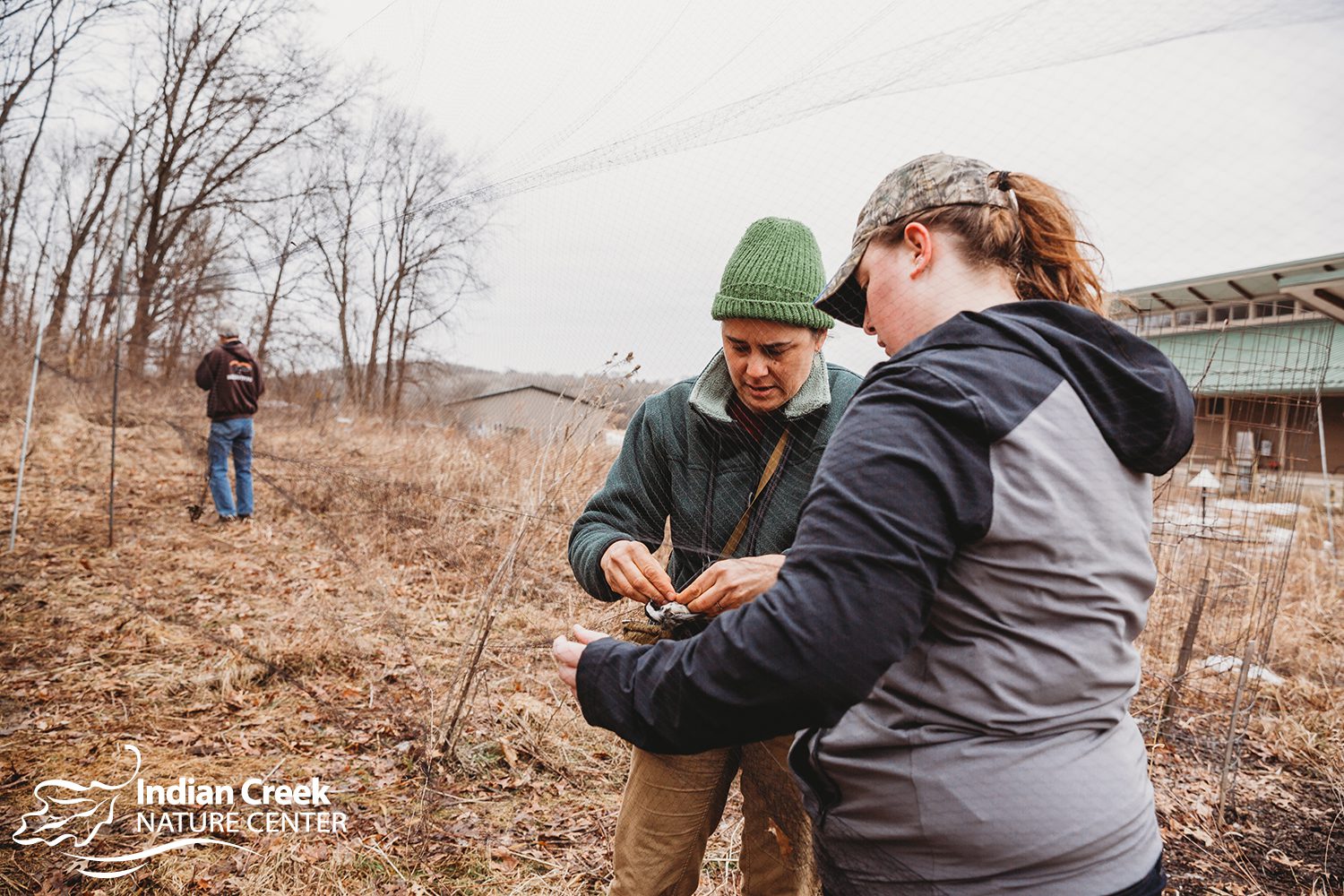
We look for areas where birds congregate. ICNC has natural habitat and feeders, both of which are attractive to year-long residents and migrants. I would like to expand placing mist nets around Bena Brook and the grasslands. We see a lot of migrants there, and some deep forest birds do not come to the feeders. Birds quickly learn where the nets are. If they can see the nets, they are very good at flying over.
Describe the process of banding a bird.
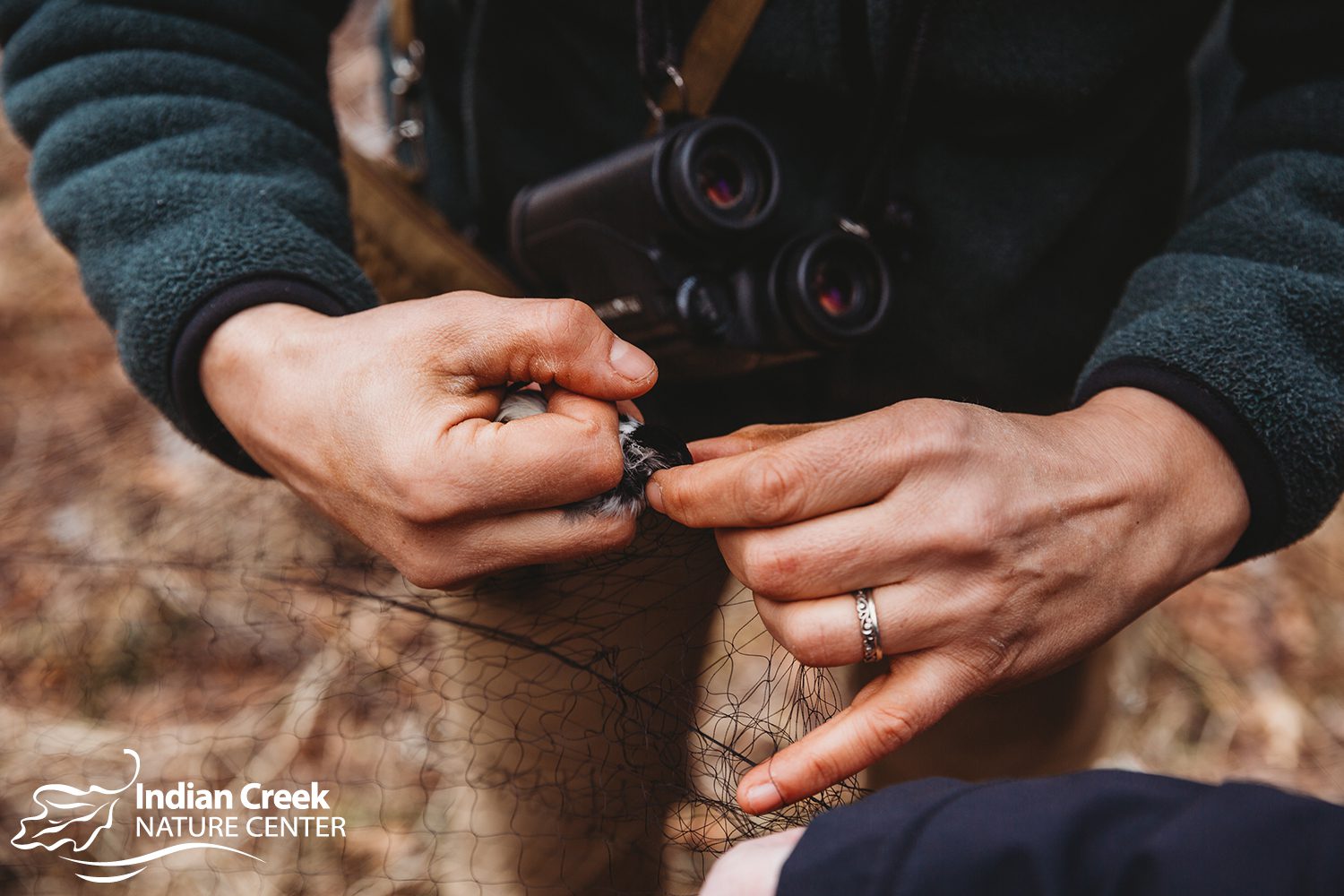 First, we need to get the bird out of the net. We don’t like the birds to be in the net too long, and we also do not want to catch a bird in extreme cold, extreme hot, or wet conditions. These can all stress the bird. Most birds come loose quickly, but chickadees are notorious for tangling themselves up into a ball of thread. Once the bird is removed, we either temporarily hold it in a mesh bag or immediately move to our banding station. We identify the bird by species, determine an age and gender, if possible. We mainly look for feather characteristics for aging and sexing the bird. We place a unique numbered band of the right side on a leg, and we then take measurements. We usually measure weight and length of some body parts. We can also examine how much stored fat the bird has to determine how healthy the bird is.
First, we need to get the bird out of the net. We don’t like the birds to be in the net too long, and we also do not want to catch a bird in extreme cold, extreme hot, or wet conditions. These can all stress the bird. Most birds come loose quickly, but chickadees are notorious for tangling themselves up into a ball of thread. Once the bird is removed, we either temporarily hold it in a mesh bag or immediately move to our banding station. We identify the bird by species, determine an age and gender, if possible. We mainly look for feather characteristics for aging and sexing the bird. We place a unique numbered band of the right side on a leg, and we then take measurements. We usually measure weight and length of some body parts. We can also examine how much stored fat the bird has to determine how healthy the bird is.
Does banding hurt the bird? How long does a bird stay ‘banded’?
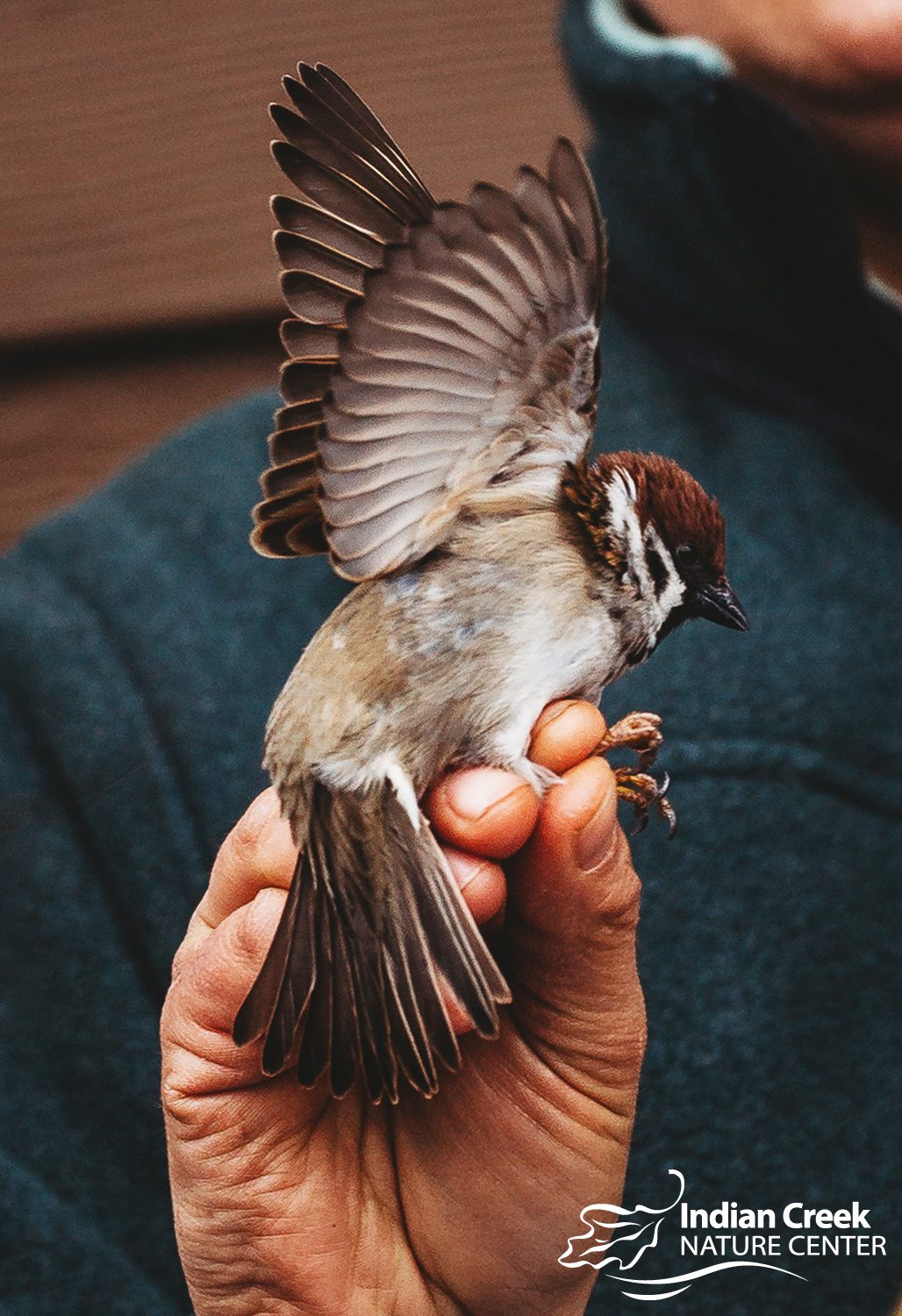 As long as we get the bird out of the net quickly and safely and process the bird quickly, banding causes no injury. The fact that we get recaptures is indicative of how we try to reduce stress. The aluminum band stays on the bird for the rest of its life. If you find a banded bird, contact a local nature center or the local conservation officer.
As long as we get the bird out of the net quickly and safely and process the bird quickly, banding causes no injury. The fact that we get recaptures is indicative of how we try to reduce stress. The aluminum band stays on the bird for the rest of its life. If you find a banded bird, contact a local nature center or the local conservation officer.
What can a family expect when they attend one of your bird banding programs at Indian Creek Nature Center?
We want everyone to be involved, especially the children. We want to hear a lot of questions, explain bird biology and, most of all, we want people to appreciate nature.
How can parents, grandparents, or caregivers extend this topic into additional learning at home?
We are in a challenging time, but, after advice from your healthcare provider and guidance from our government, you may be able to still go outside and enjoy a walk as long as you keep social distancing. We are fortunate to have lots of resources to identify birds. When I started birding for fun, there were only two really good bird identification books and binoculars were so-so unless you paid a lot of money. Now, there are several good bird identification books and the Cornell Lab of Ornithology has a free app called Merlin. There are other great apps that can be downloaded for not much money. You can still spend a lot of money on binoculars, but a good set of binoculars that are waterproof with a lifetime warranty can be obtained for under $125. The Iowa Ornithologists Union also has an active webpage with information on Iowa birds and a listserve of recent sightings. Most birdwatchers love people as much as birds and are willing to help beginning birders.
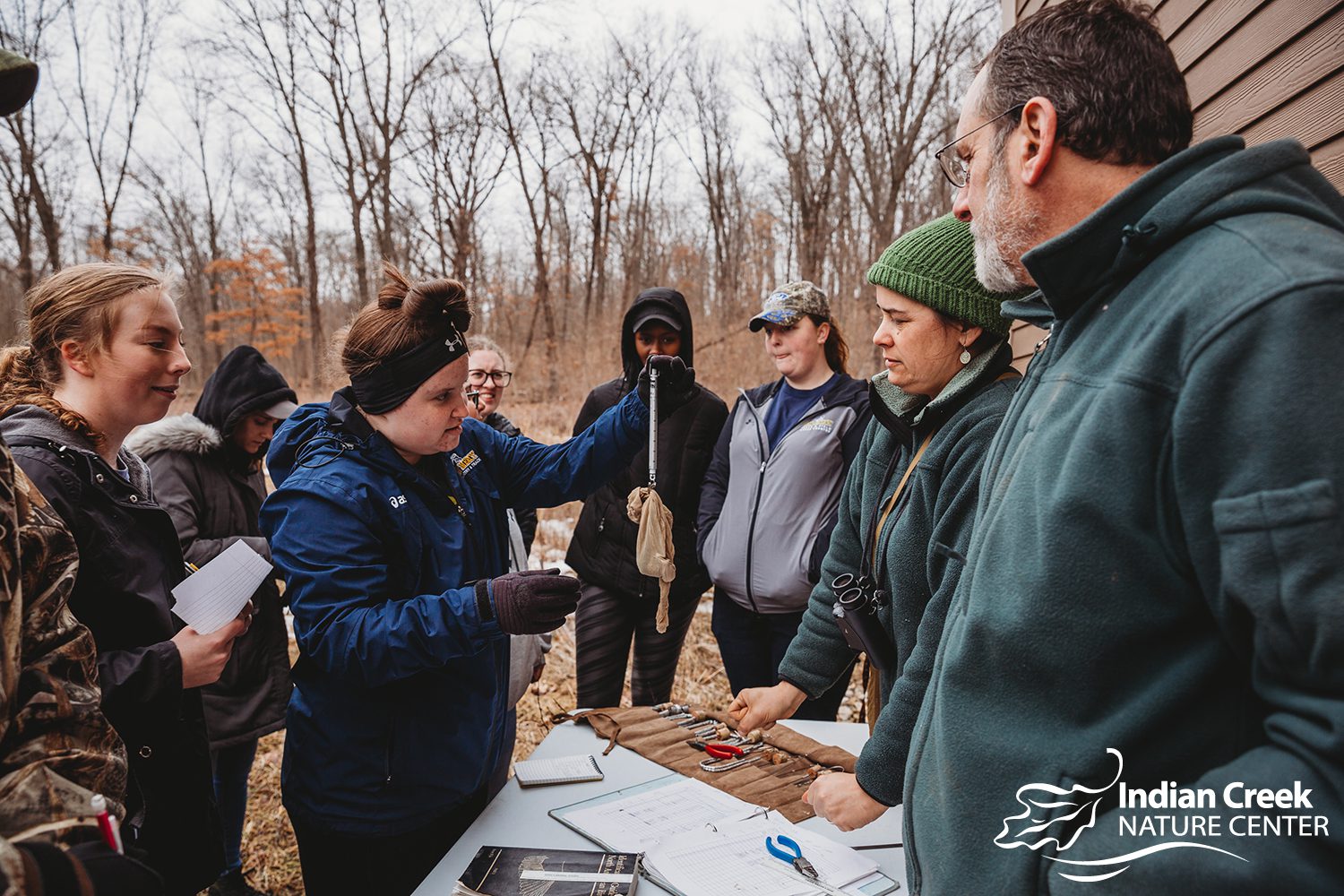
What trends have appeared over the years as a result in the data that has been collected?
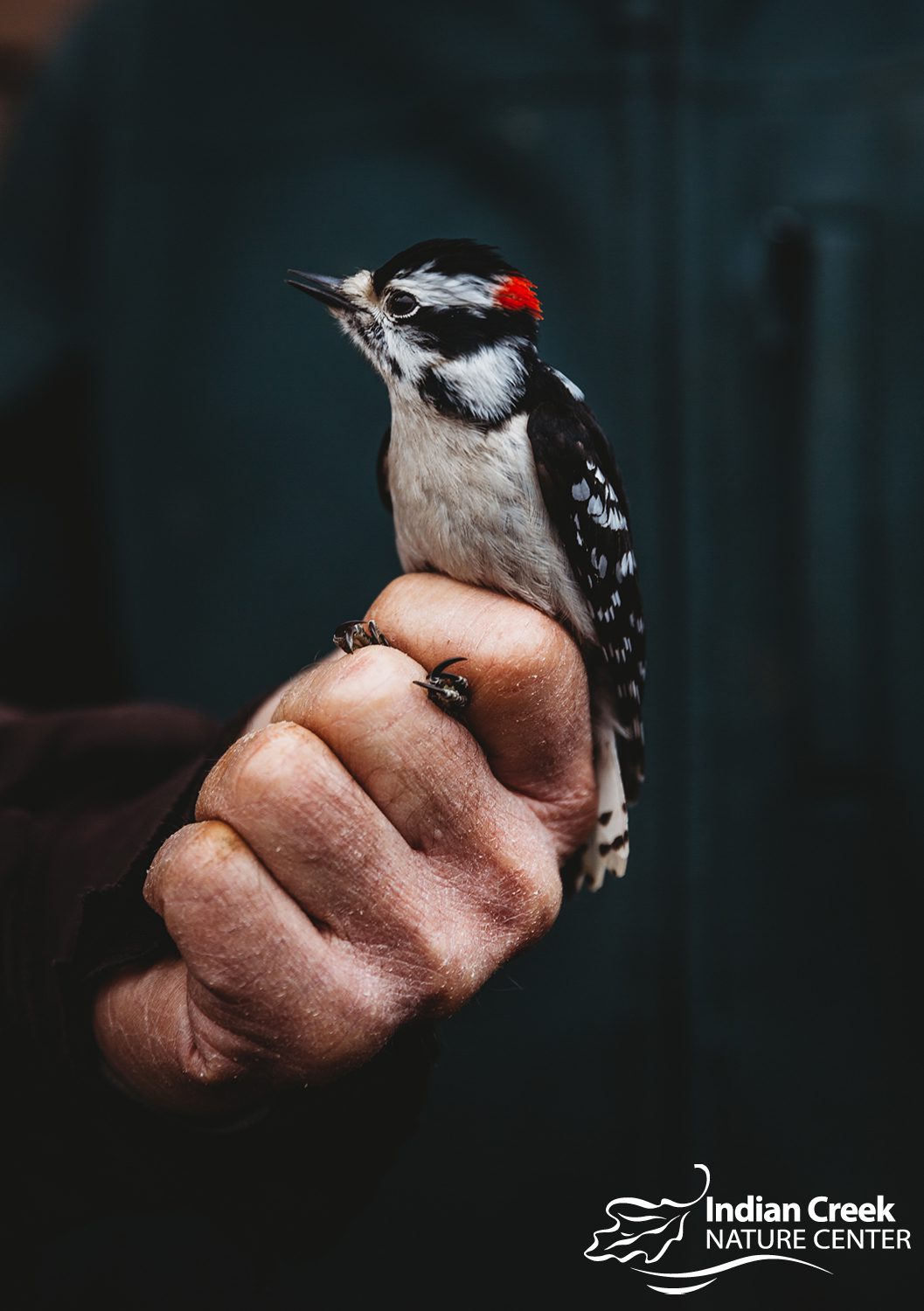
This is a sad story. I have been teaching college classes in eastern and western Iowa since 1982. I mainly work with fish, birds, and a few other vertebrates. There have been dramatic declines in numbers and diversity. We tend to think of rare, specialized species as declining, but I am now seeing the trend in what were once common species that are generalists.
People want to know what is causing the decline. The answer is that the declines are not caused by a single source, in most cases. They are caused by different factors depending on the organism and the location. One analogy is to think of how you make coffee or tea. In either case, you strain the water past the coffee or tea by using a filter. If you had more filters, you would have less coffee or tea in the cup, a more diluted beverage. So, think of what was the past biodiversity and envision a series of environmental disturbances as a series of filters. Each filter contributes to diluting the present biodiversity.
How can homeowners and business owners support bird habitats? What action can we take in general?
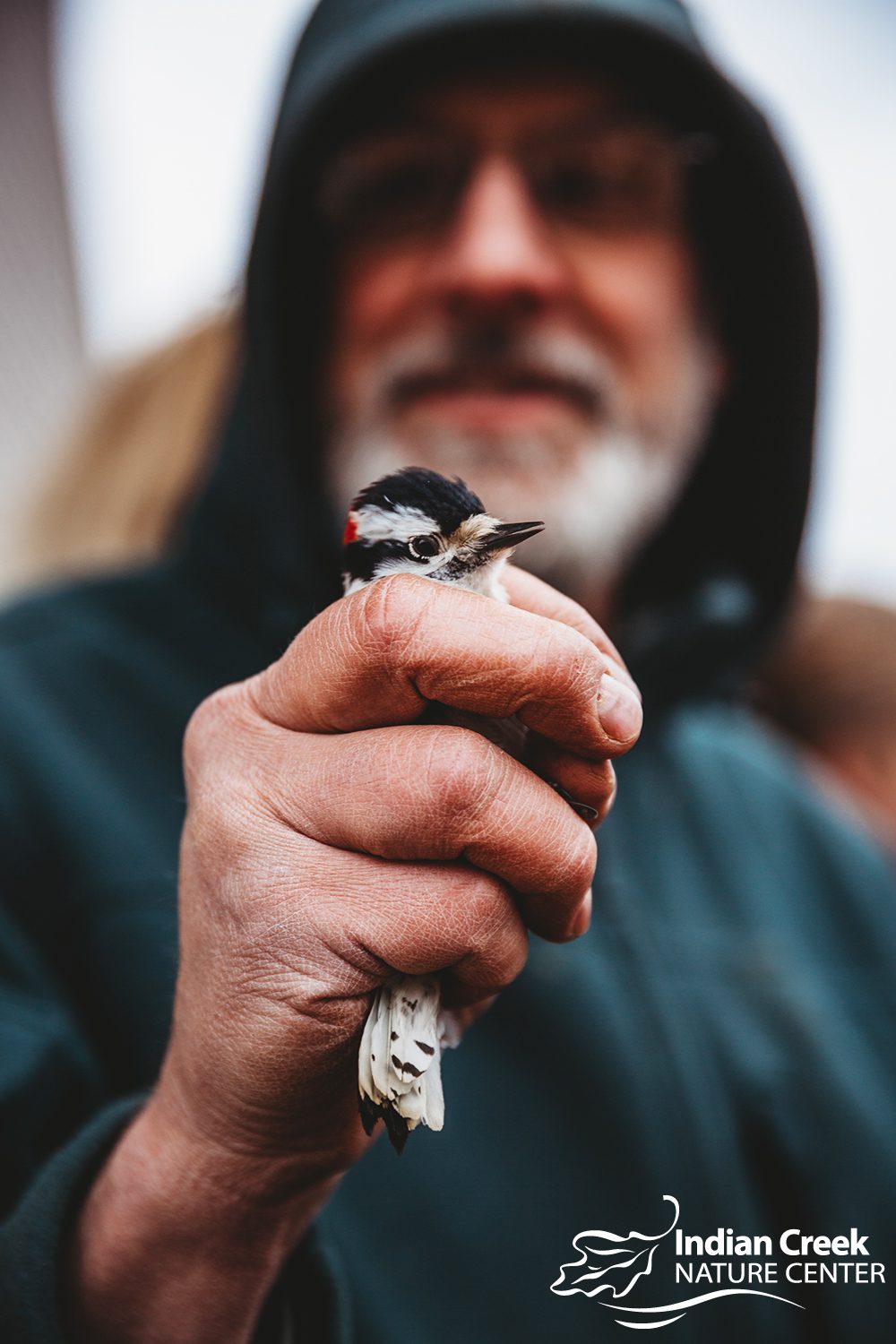
There are great resources by organizations like the Audubon Society and the National Wildlife Federation about how to create backyard habitats for many different organisms. Water, food, and shelter are important to birds. I really do not like planting non-native species, even though plants like honeysuckle and mulberry are great food sources for birds. Many of our invasive woody species in Iowa produce fruit that birds eat. Hence, birds spread these plants when they defecate.
About Neil Bernstein
I began birdwatching in the late 1960s with my friends and the local Audubon Society in central Ohio. We were typical teenagers during the days of hippies, but the Audubon group quickly adopted us and set an example on how to love nature and actively work to protect the environment. I went to Colorado State University where I completed a B.S. in Zoology in between taking time to birdwatch and backpack.
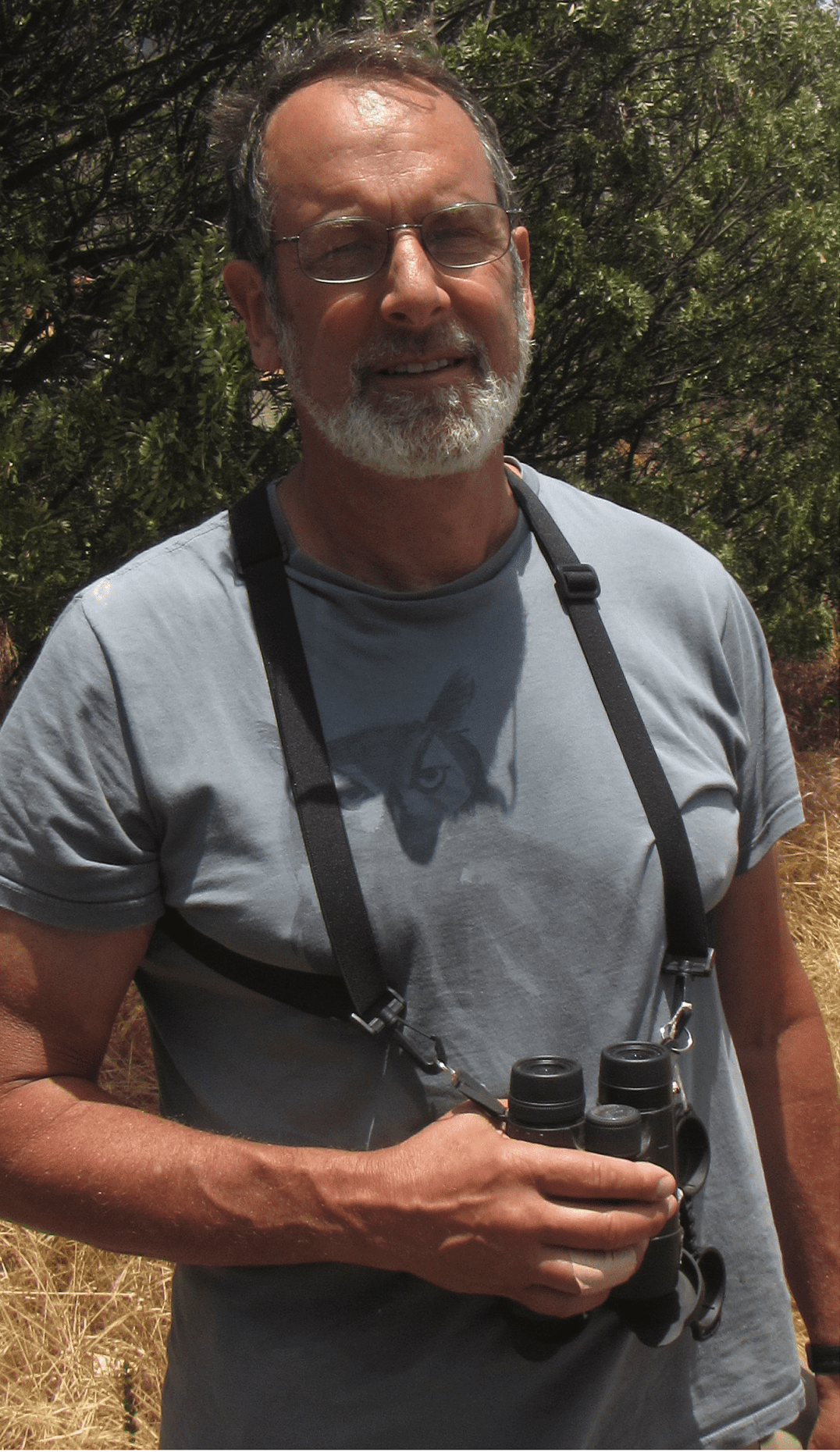
I next returned to Ohio where I did a M.S. in Biology at John Carroll University by studying Red-winged Blackbird habitat choice in a disturbed marsh complex. I also learned about teaching undergraduates and worked on amphibian, reptile, mammal, and fish surveys. After John Carroll, I was accepted at the University of Minnesota in the Department of Ecology and Behavioral Biology. In Minnesota, I lived at a 5400 acre natural area, but I did my research in Antarctica on seabirds. During the studies, I spent 14 continuous months in Antarctica. After my doctorate, I taught at Mount Mercy University from 1982-2018. In 1986, I began teaching summers at Iowa Lakeside Laboratory, where I still teach part of the summer. In 2017, I started teaching field classes in the Department of Earth and Environmental Sciences at the University of Iowa, where I still am an adjunct professor. In 1996, I began research on Ornate Box Turtles with colleagues from Cornell College. With our students, we have published several papers on conservation biology and ecology of the species, and I am currently trying to write up the last of the data. I also spent several seasons studying amphibians and reptiles at a private sand prairie near Muscatine. Many know my long-suffering wife, Renate, or my two daughters, Anya and Lexi. They are unified in wanting me to spend more time birdwatching, paddling, or working on fixing up the house.

